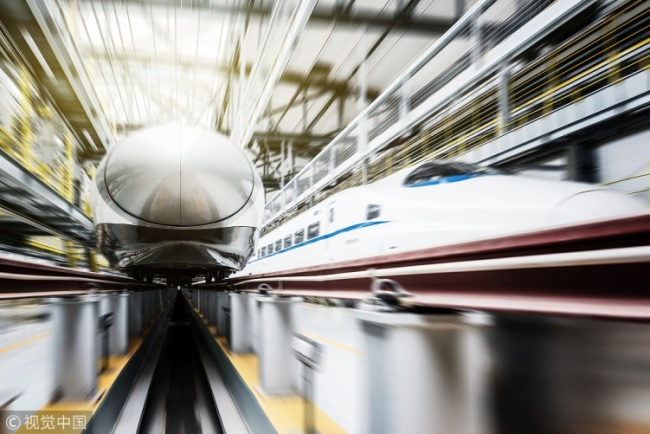
Opinion
21:45, 05-Feb-2019
How technology has reshaped Chinese New Year

Editor's note: The following is an edited translation, from the English website China Plus, of a commentary that first appeared on the Chinese-language website "Commentaries on International Affairs" on February 5, 2019.
During Monday's Spring Festival Gala, a traditional four-hour extravaganza broadcast on the eve of the Chinese New Year with the largest TV audience of any entertainment show in the world, a comedy routine called "Platform" highlighted the stories of four couples heading home for family reunions during the Spring Festival travel rush.
It's regarded as the largest human migration on the planet with over 40 million domestic journeys being made during a period of 40 days. Travelling at this time can be a daunting prospect.
But with China now firmly in the age of high-speed railway travel, pressure on the country's transportation system has been greatly alleviated, and people now have a better travel experience, with considerably swifter journey times.
Apart from being able to travel faster, it appears Chinese people are also traveling lighter. Spring Festival presents for family members and friends arrive home long before the homecoming trips, thanks to the fast development of e-commerce and logistics industry.

High-speed railway services have greatly alleviated the pressure on China's transportation system, especially during the annual Spring Festival travel rush, regarded as the largest human migration on the planet. /VCG Photo
High-speed railway services have greatly alleviated the pressure on China's transportation system, especially during the annual Spring Festival travel rush, regarded as the largest human migration on the planet. /VCG Photo
Meanwhile, high-tech digital products are increasingly taking up a bigger share of the New Year gift market. According to statistics from China's Ministry of Commerce, several thousand smart speakers were sold within a short period of time ahead of the Spring Festival season via an E-Shopping trading post in a village in southeast China's Fujian Province. Other popular gifts include robot vacuum cleaners, food blenders, companion robots, drones, and intelligent heated underwear.
In fact, high-tech products have become increasingly popular among Chinese people even in their day-to-day lives.
During the first China Import Expo held in November last year in Shanghai, China placed orders with global suppliers worth 57.8 billion U.S. dollars.
High-tech products such as the world's smallest cardiac pacemakers, automatic coffee machines, 3D printed masks, and smart sportswear were the most popular among Chinese consumers at the expo.
These changes signify China's consumption upgrade. Hence, it's no surprise that the rest of the world is vying for a share of this lucrative market.
Last week, a new round of economic and trade talks between China and the U.S. ended in a positive atmosphere. More talks are about to kick off with the aim of finally concluding a trade agreement. It's expected that greater openness will bring more high-tech products into the Chinese market, inevitably bringing even greater changes to the lives of ordinary Chinese people in the years to come.
(If you want to contribute and have specific expertise, please contact us at opinions@cgtn.com.)

SITEMAP
Copyright © 2018 CGTN. Beijing ICP prepared NO.16065310-3
Copyright © 2018 CGTN. Beijing ICP prepared NO.16065310-3